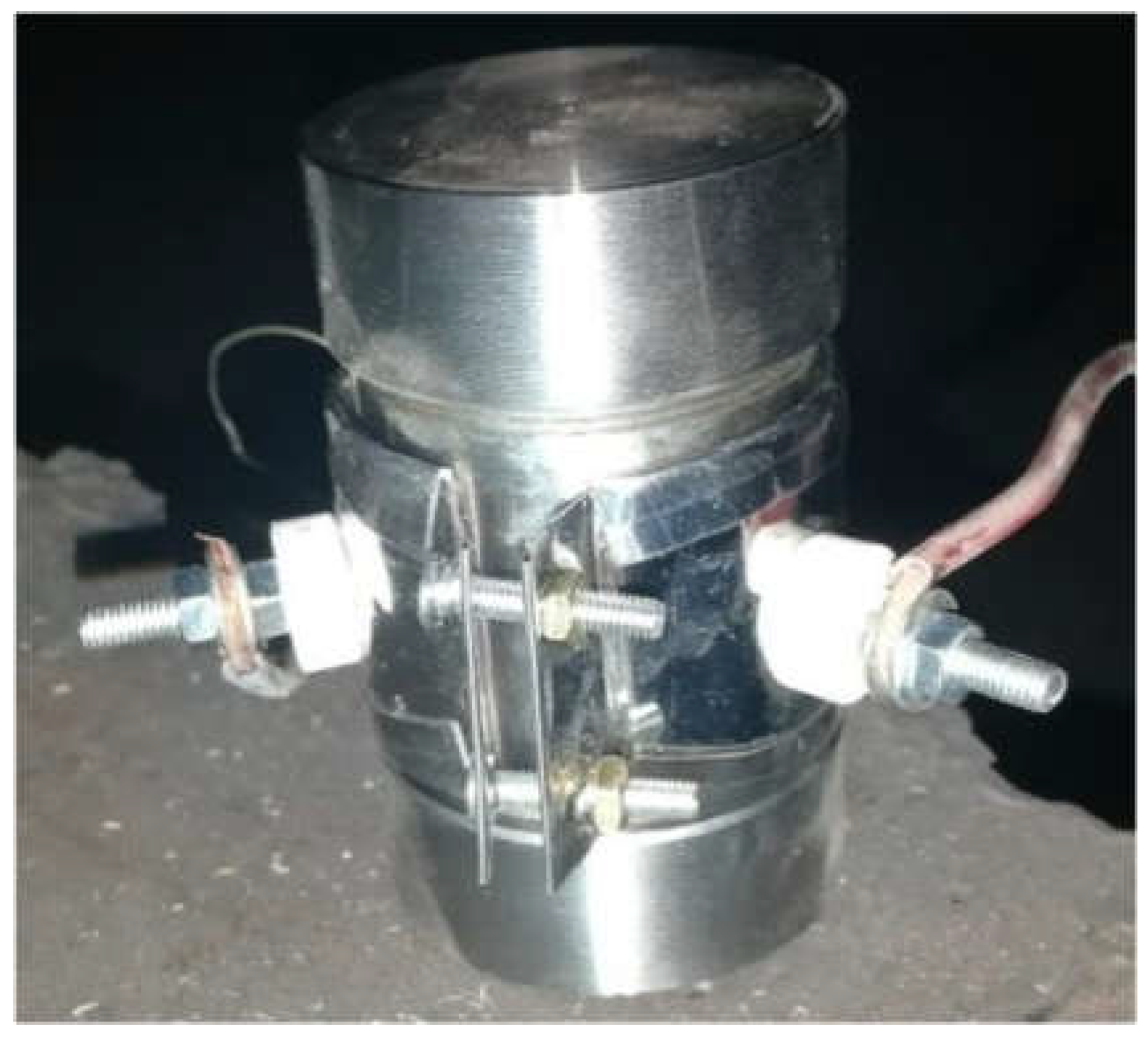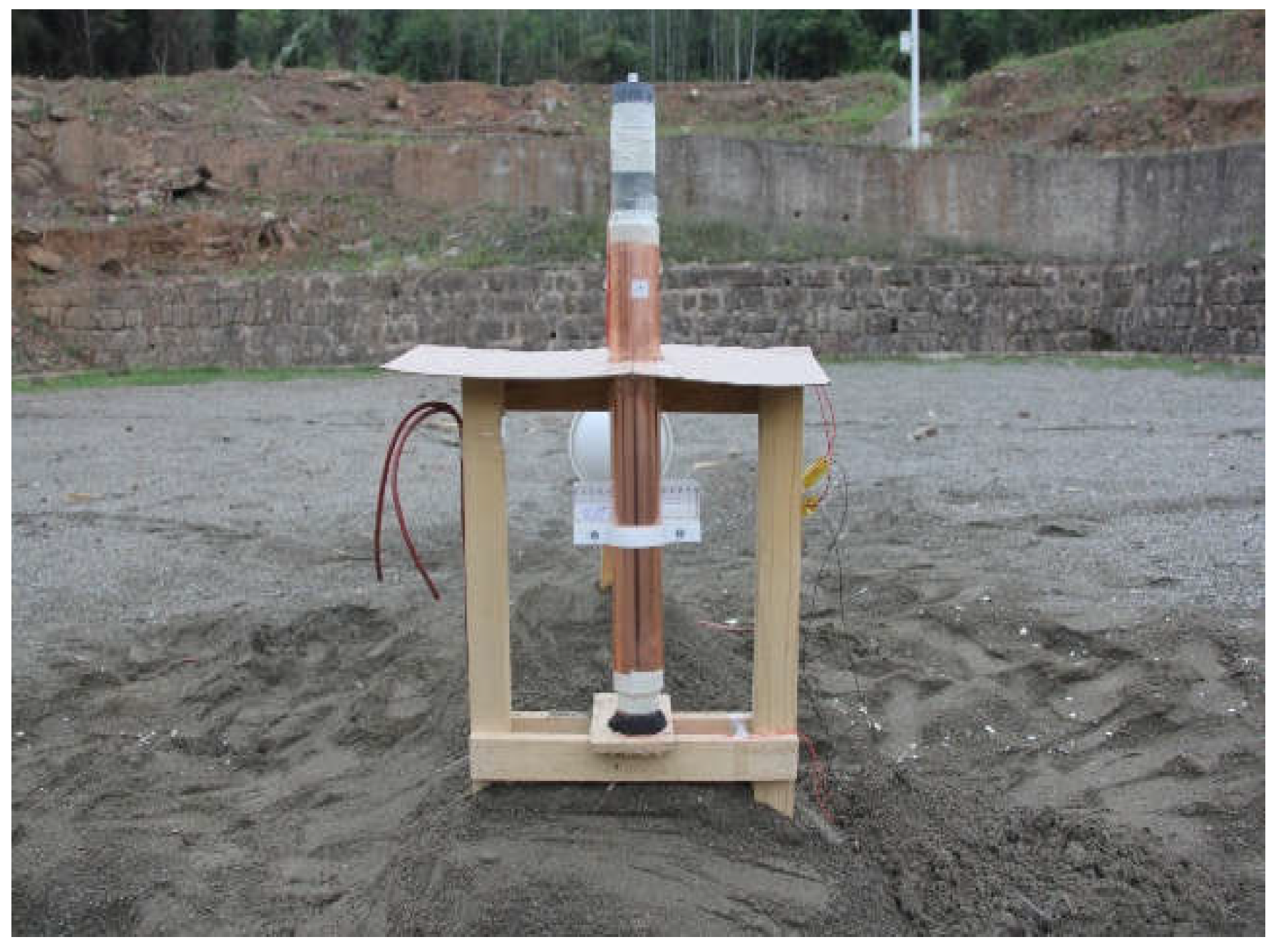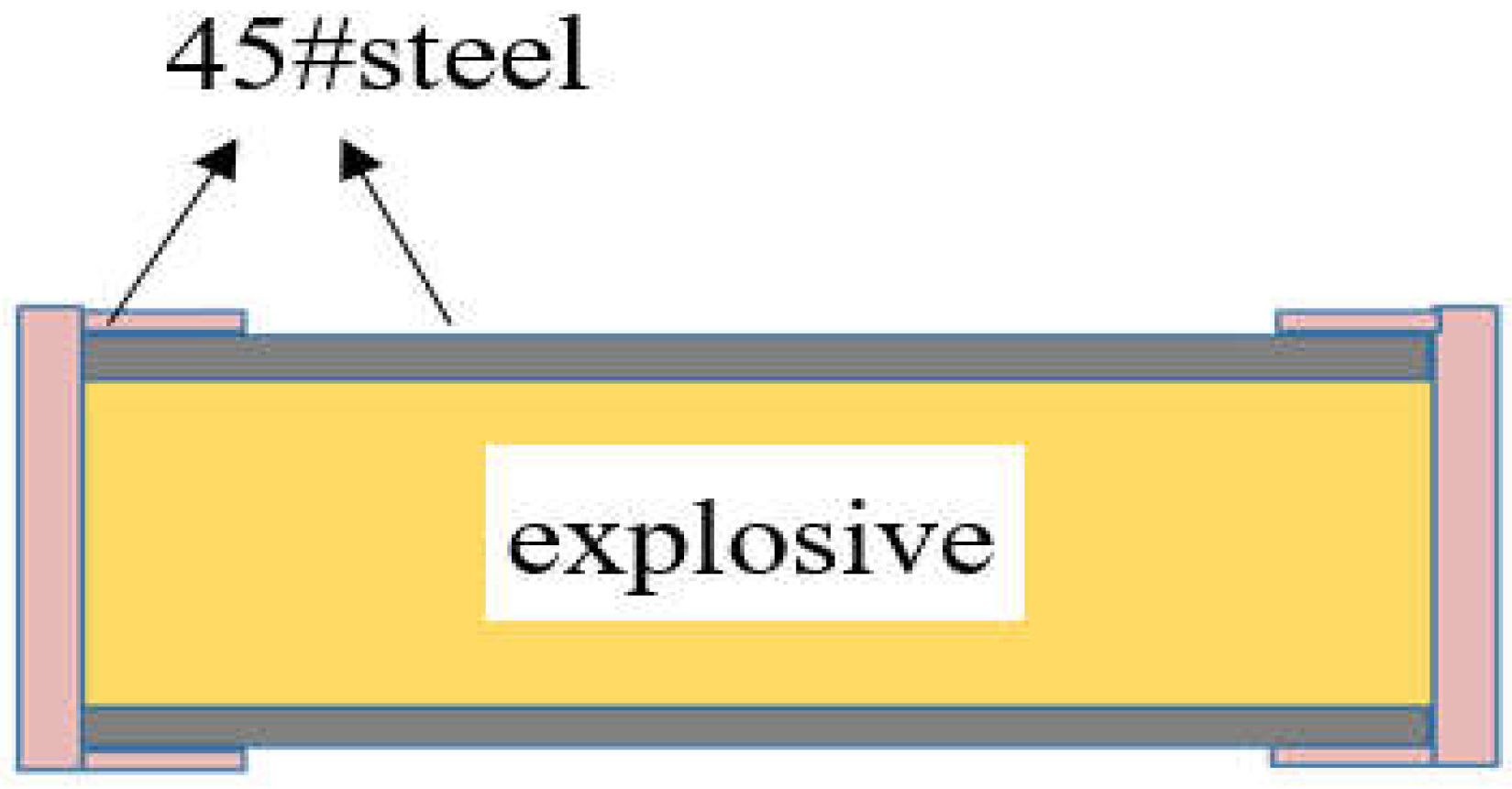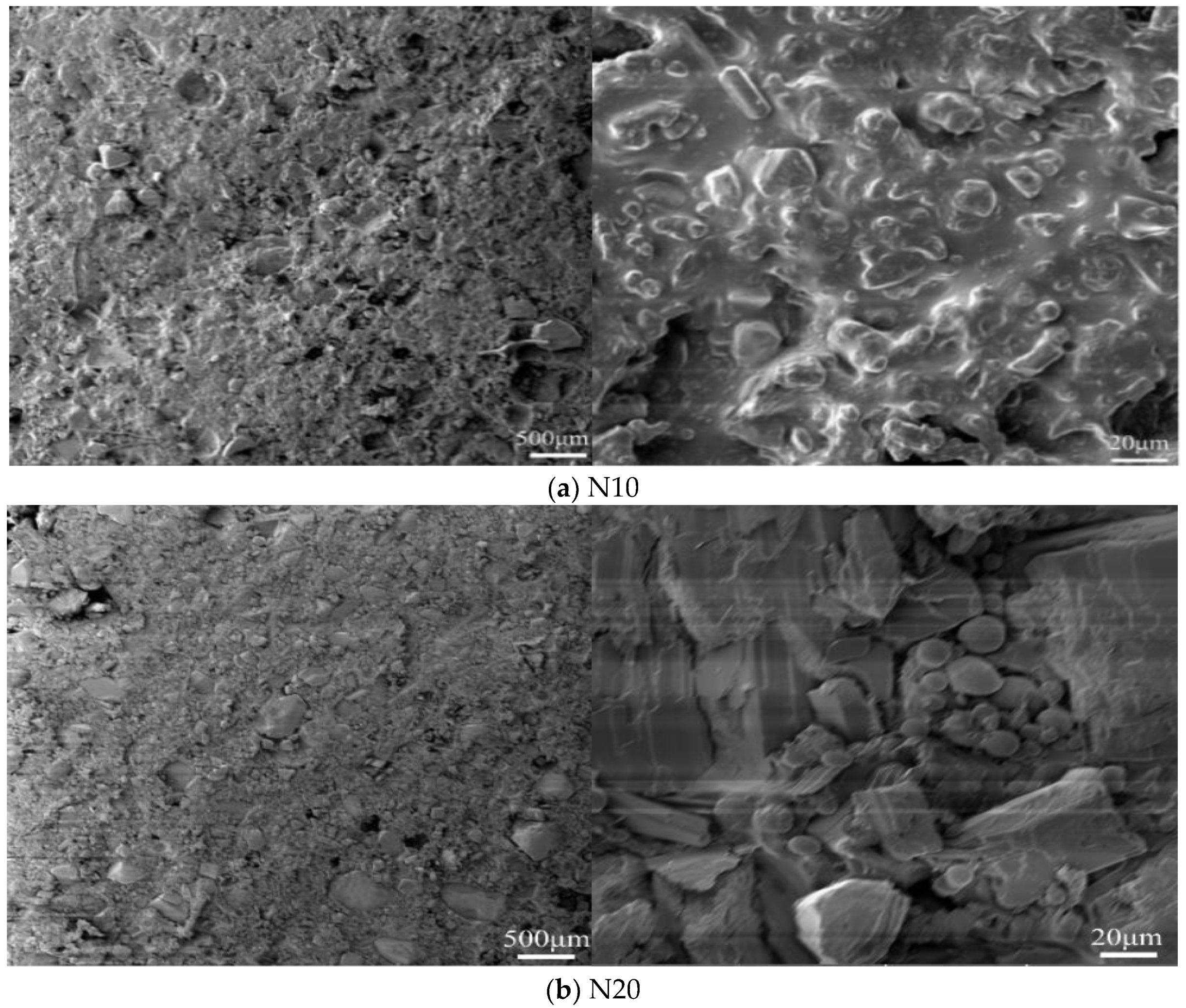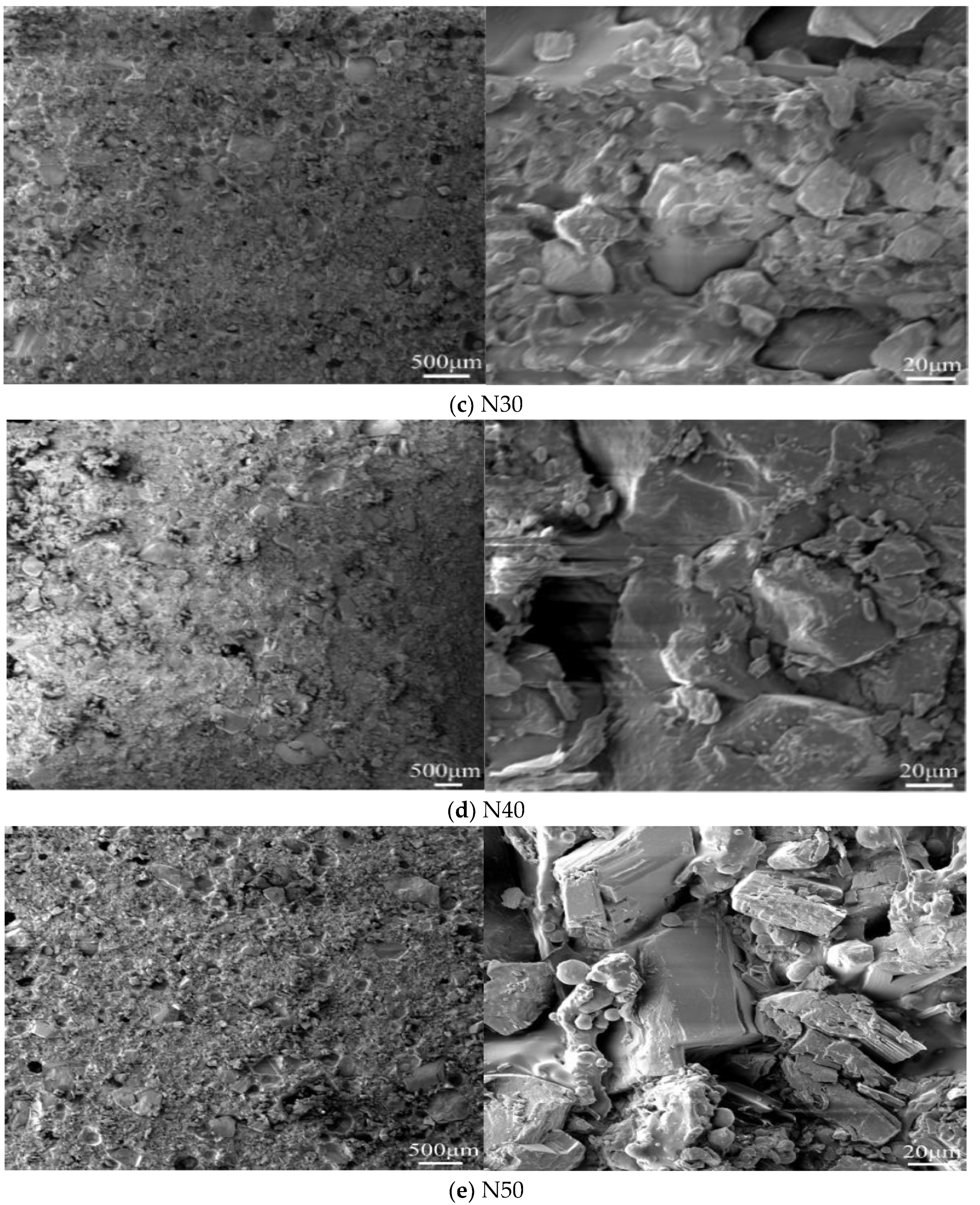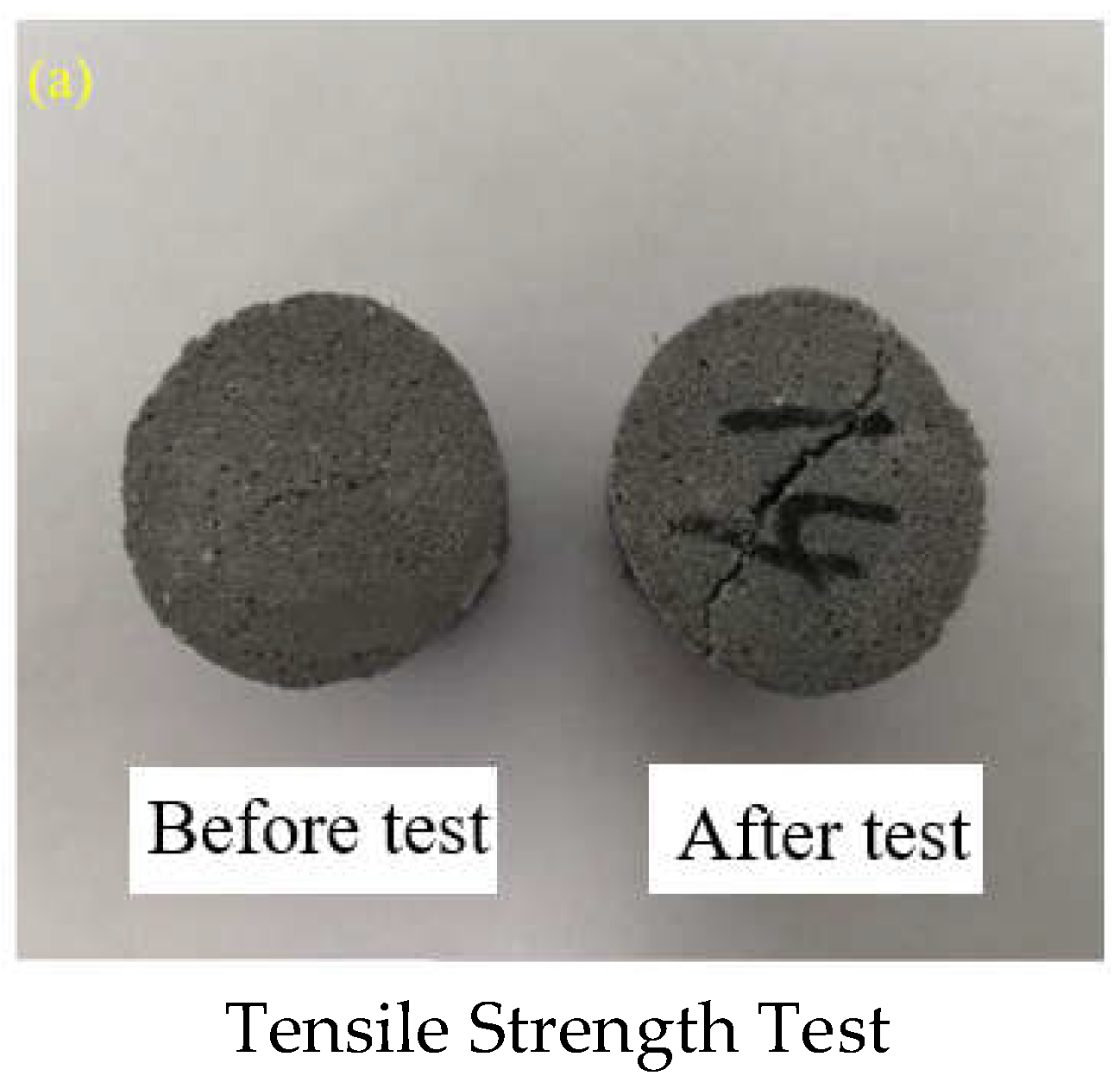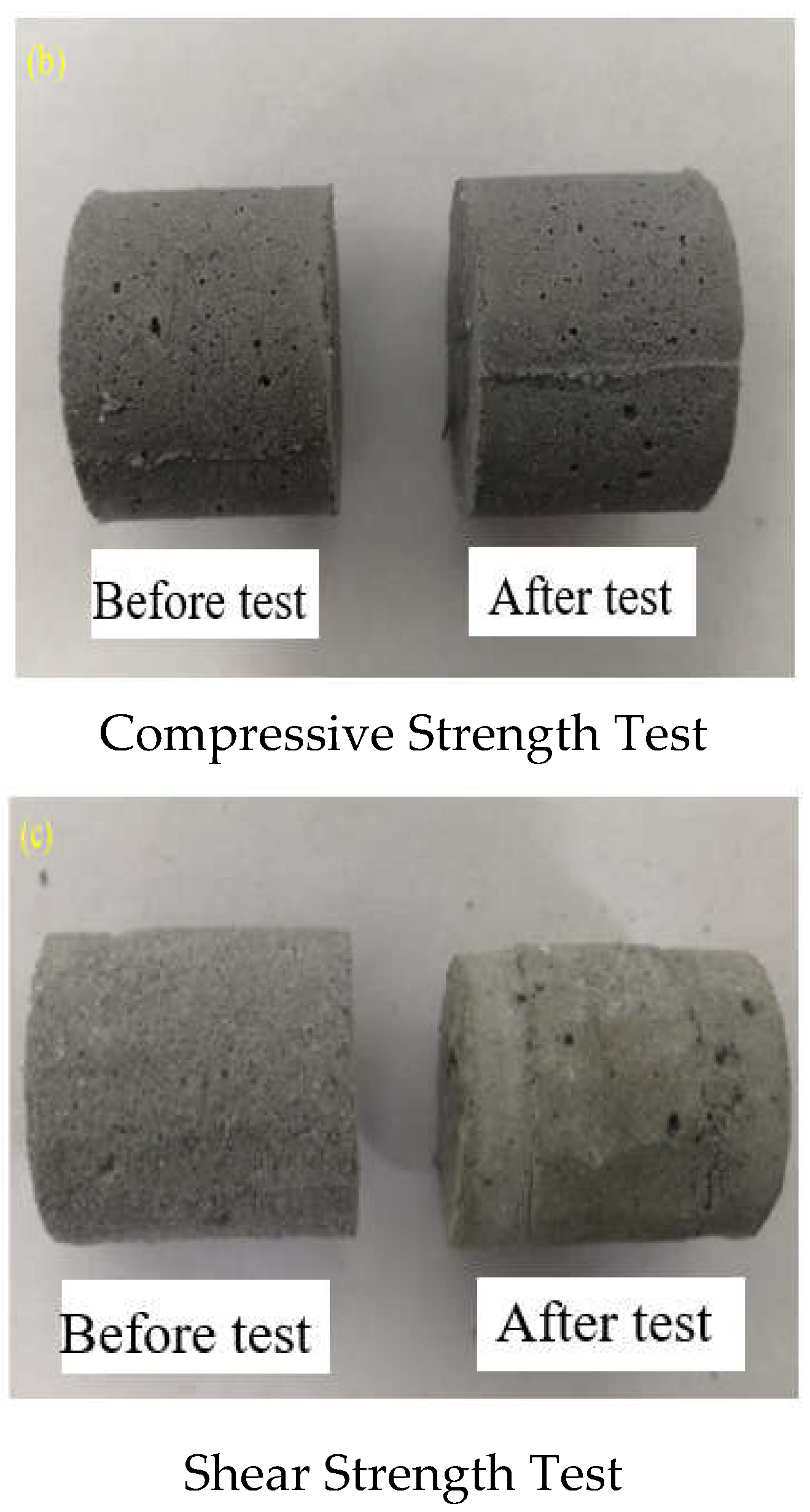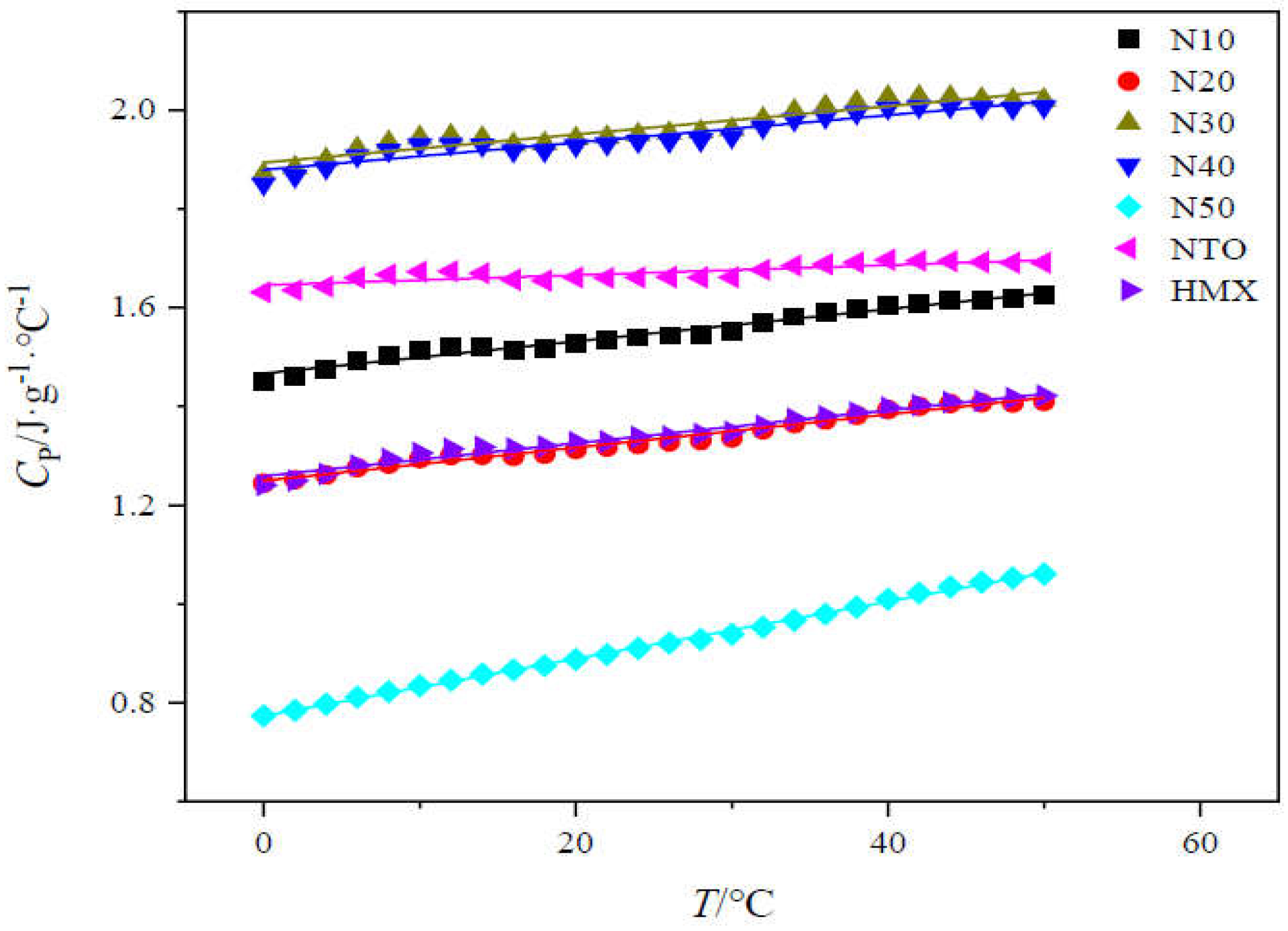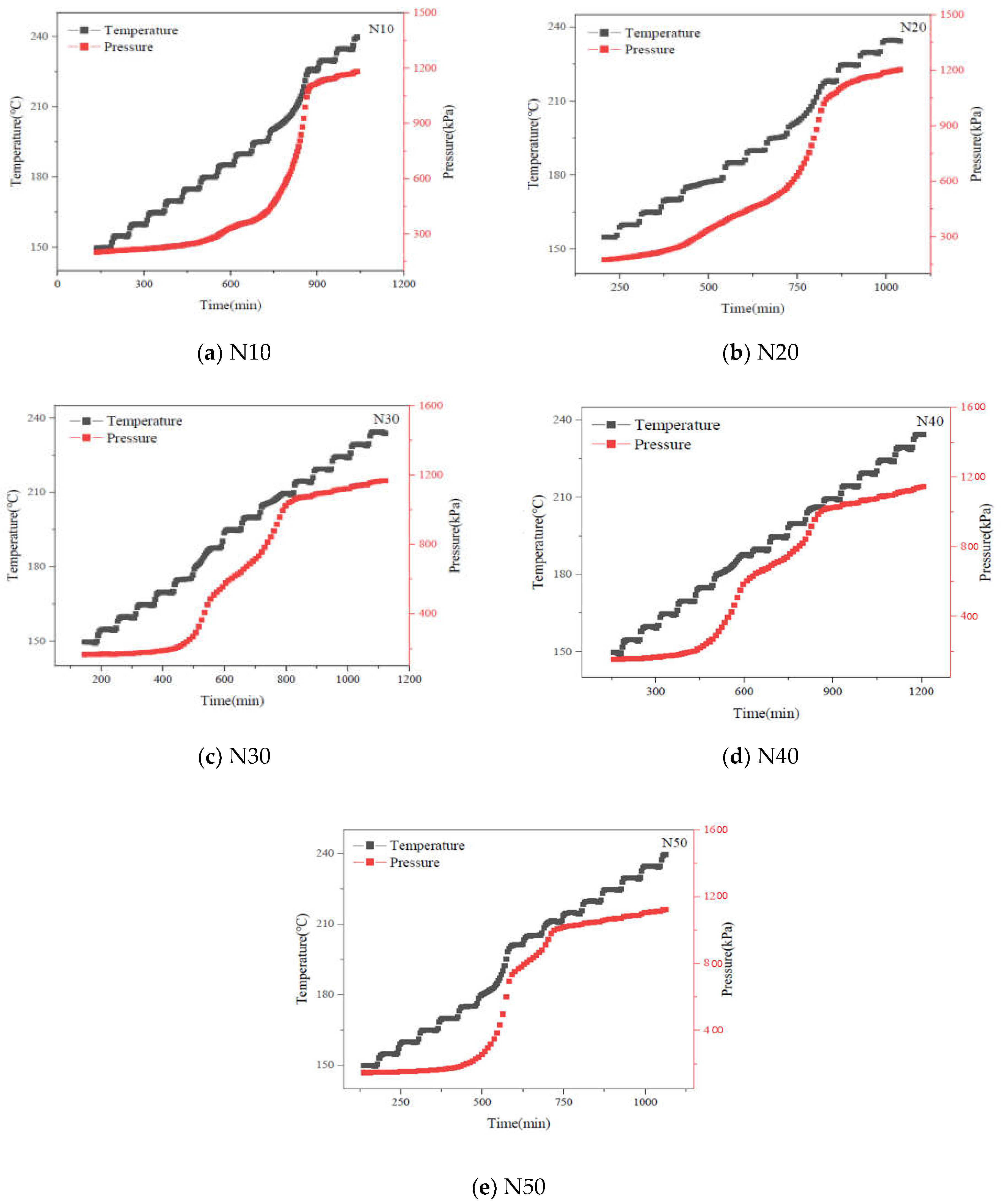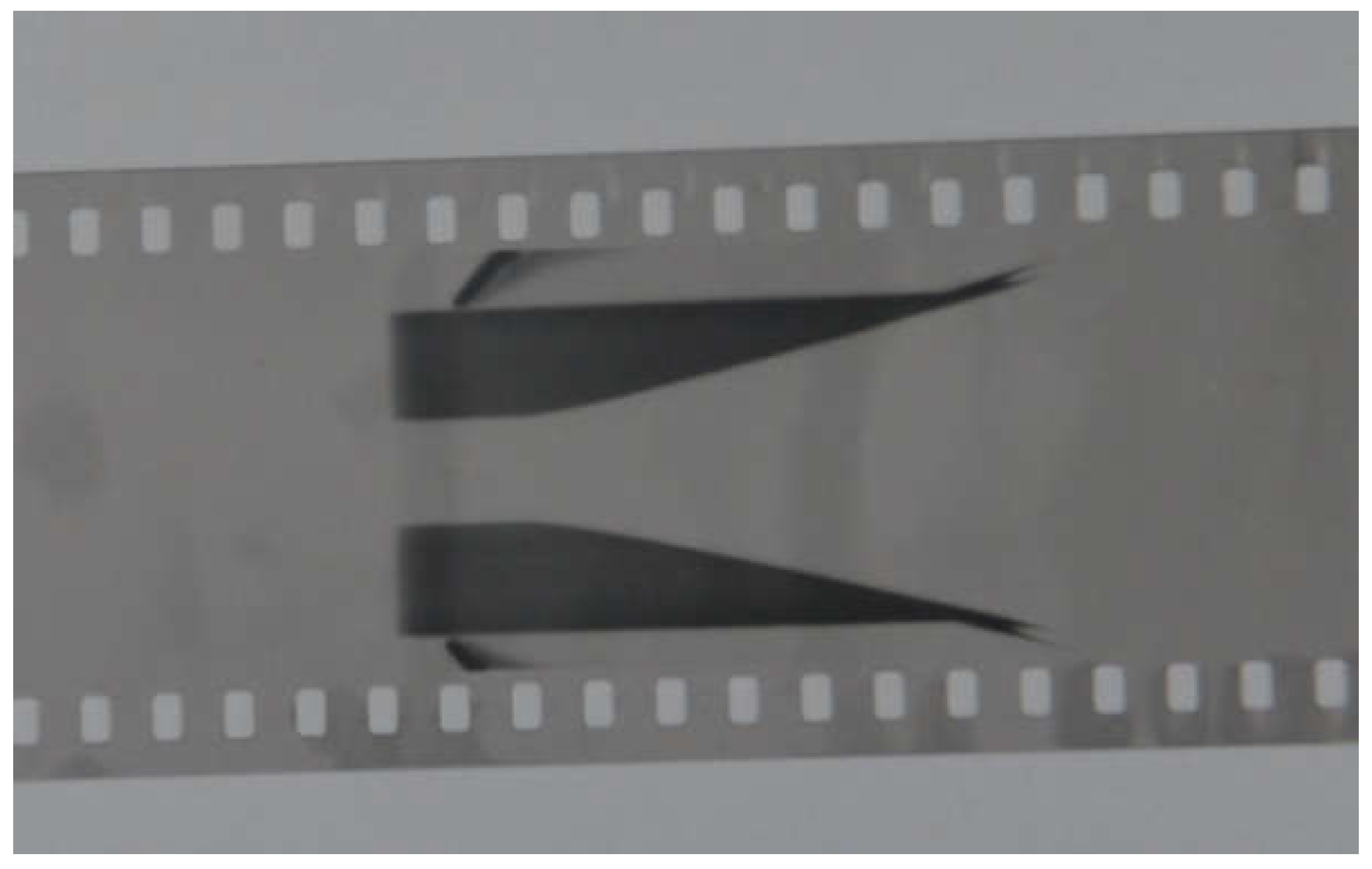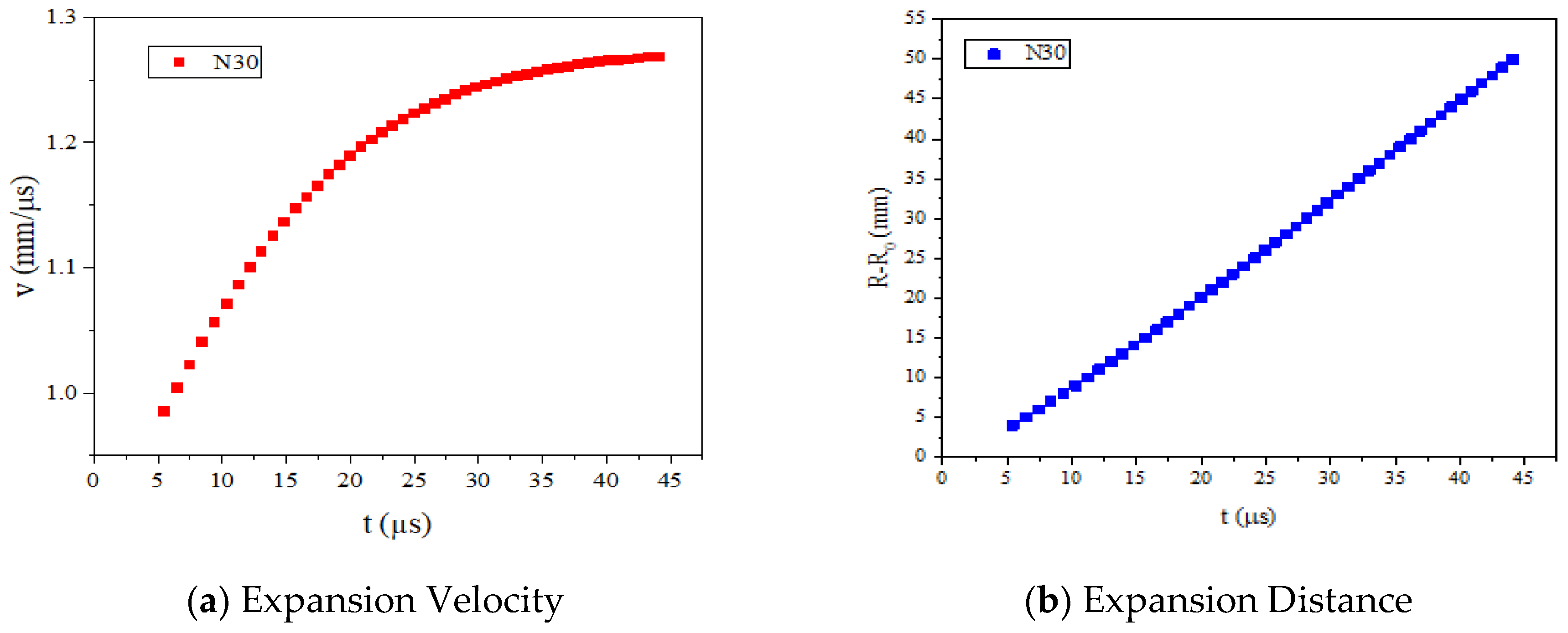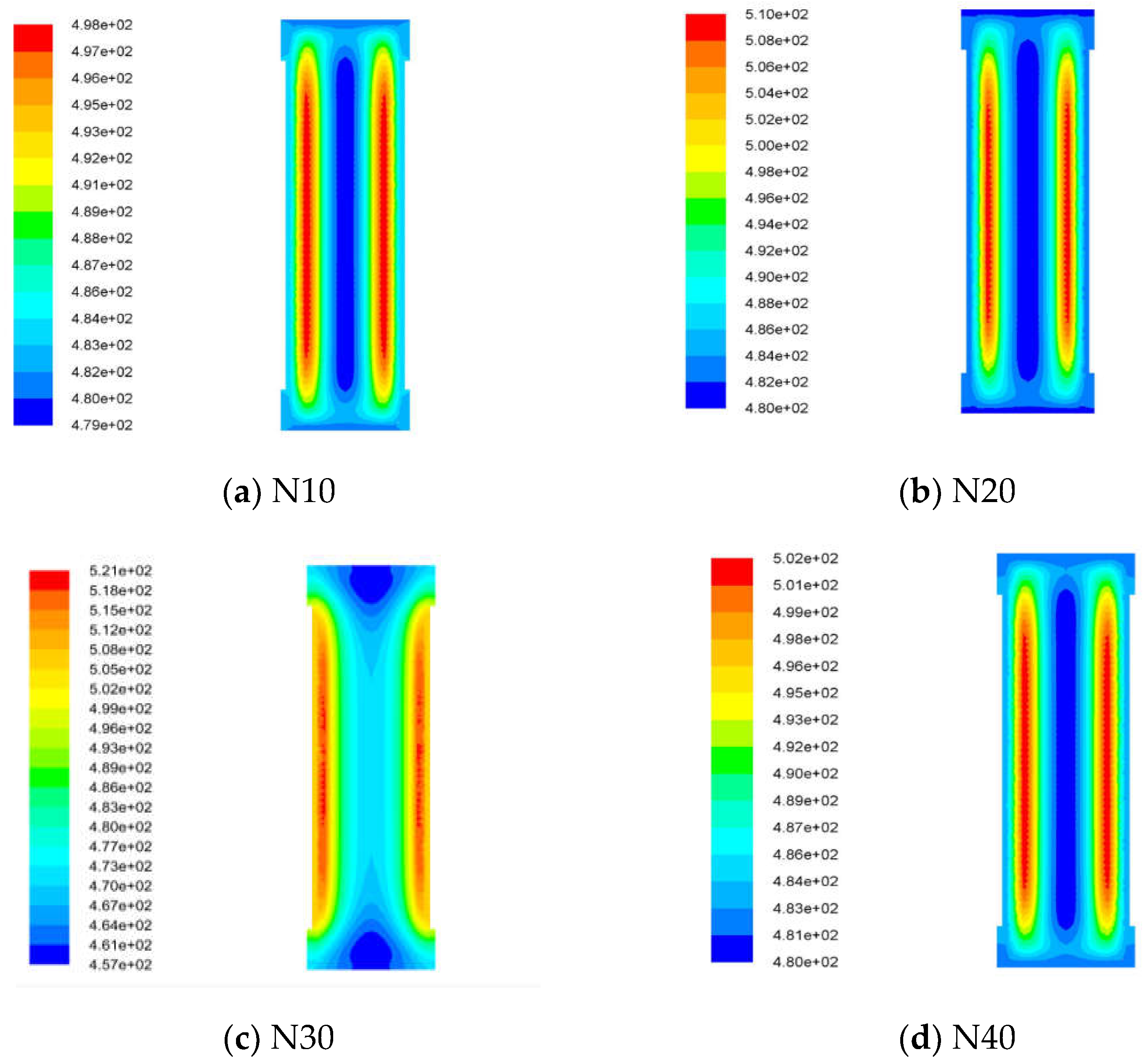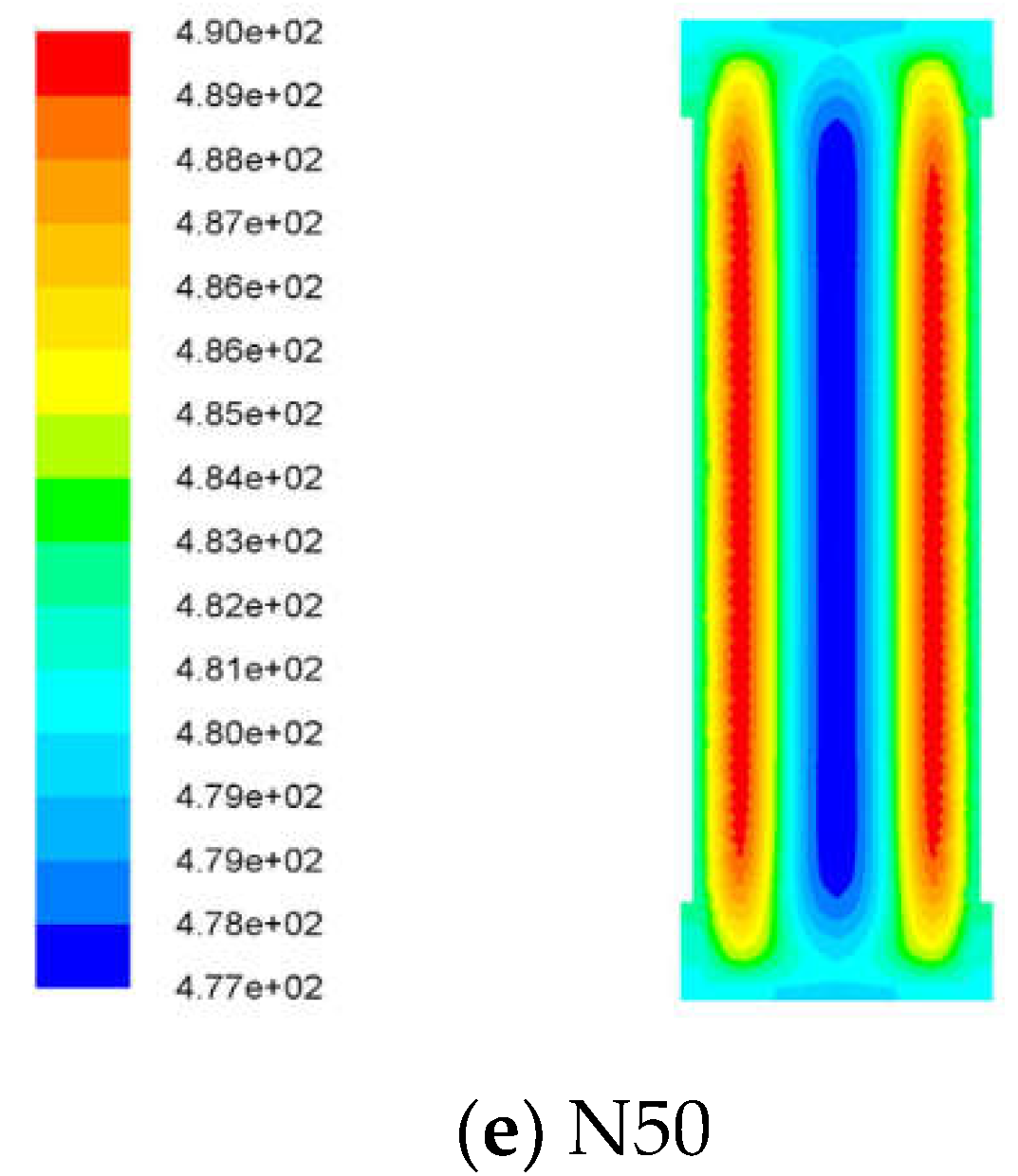3.2. Mechanical Sensitivity
The measurement results of mechanical sensitivity for five kinds of HMX/NTO-based aluminized cast-PBXs are listed in
Table 2. GOL−42 [
15] is the HMX-based aluminized cast-PBX without NTO (75%HMX,15%Al,10%binder)
In
Table 2, the impact sensitivity and friction sensitivity of the five HMX/NTO-based aluminized cast-PBXs are both below 25%. With the increase in the NTO content, the impact sensitivity and friction sensitivity decreased. When the NTO content was changed from 10% to 20%, the impact sensitivity fell from 24% to 10%. In this range, the addition of NTO significantly reduced the mechanical sensitivity of NTO/HMX-based aluminized cast-PBXs. Because of the addition of a compound sensitivity reduction reagent, the impact sensitivity of GOL−42 is only 4%, but friction sensitivity of GOL−42 is still quite high. The sensitivity of an energetic material is largely determined by its own structure. For NTO, the lone pair of electrons on the nitrogen atom joins the conjugation, which leads to enhanced aromaticity of the ring, thereby improving the thermal stability. The melting point of NTO also rises above its decomposition temperature due to the presence of intermolecular hydrogen bonds. Additionally, NTO is less sensitive to the mechanical effects of impact and friction, which prevents the rapid generation of hot spots. The HMX molecule is an eight-membered heterocyclic structure with alternating carbon and nitrogen, which is more sensitive to the mechanical effects of impact and friction. Therefore, the higher the NTO content, the lower the probability of generating hot spots when subjected to mechanical action.
3.4. Detonation Properties
The detonation speed is the basic parameter to measure the energy level of explosives. The detonation velocity results and the detonation heat results of cast-PBXs are shown in
Table 4.
It can be found from
Table 4 that the measured detonation velocity of each cast-PBXs is sorted in order: N10 > N30 > N20 > N40 > N50. With the increase in NTO content in the cast-PBX, the measured detonation velocity showed a decreasing trend.
The changing trend of detonation heat of cast-PBXs is consistent with detonation velocity. The HMX molecule has higher nitrogen content and more initiating bonds, so it has higher detonation heat than NTO. Therefore, with the increase in HMX content, the detonation heat tends to increase.
3.5. Thermal Characteristic
The specific heat capacity-temperature curves (C
P−T) of five different HMX/NTO-based cast-PBXs (temperature range of 0~50 °C) are shown in
Figure 7. The specific heat capacity (C
P) at 25 °C and thermal conductivity(λ) of different cast-PBXs are listed in
Table 5.
From the data in
Table 5, it can be found that at 25 °C, the C
P of N30 and N40 is larger, and the C
P of N10 and N50 is smaller. With the increase in NTO, the C
P and λ of the cast-PBXs showed a trend of first increasing and then decreasing. Among the cast-PBXs, N20 has the highest λ. Large C
P means the explosive has a better ability to absorb heat and small λ means better thermal insulation of explosives. When the explosive with large C
P and small λ is stimulated to form a hot spot, its heat will be absorbed, resulting in an explosion from self-accelerating thermal decomposition reaction being prevented. The addition of NTO can greatly reduce the thermal conductivity of explosives. From the data in
Table 2 and
Table 5 it can be determined that although N50 has the smallest C
P, its value of λ is only 0.46. This indicates that it has the best thermal insulation effect and can prevent the formation of hot spots when externally stimulated, meaning the mechanical sensitivity of N50 is also the lowest.
3.6. Thermal Safety Performance
The adiabatic thermal decomposition behavior of HMX/NTO-based aluminized cast-PBXs were investigated by ARC. The variation of pressure and temperature with time during the whole process were shown in
Figure 8.
Combining the factors of pressure and temperature, different cast-PBXs have two adiabatic thermal decomposition stages. The adiabatic thermal decomposition reactions of N10 and N20 mainly occur in the second stage, while N30, N40, N50 mainly occur in the first stage. With the increase in the relative content of NTO, the slow decomposition stage was prolonged, resulting in more reactants being consumed in this stage, as well as more gas being produced in the reaction. In a confined space, if the gas generated in the first stage is enough to rupture the shell, the explosive will be in an unsealed state. As such, the reaction will not proceed to the second stage, and the detonation reaction will not occur easily. It can be carried out at night to explain the phenomenon that the lower the temperature of the slow cook-off experiment, the easier it is to pass.
Figure 9 shows that temperature (T), pressure (P), rate of temperature rise (dT/dt) and rate of pressure change (dP/dt) curves with time during thermal decomposition of N10, N20, N30, N40 and N50.
Table 6 shows adiabatic thermal decomposition characteristic parameters of five different HMX/NTO-based aluminized cast-PBXs.
Figure 9 and
Table 6 show that the initial decomposition temperature of N10, N20, N30, N40 and N50 are in the order of N40 < N50 < N10 < N20 < N30. To a certain degree, the initial decomposition temperature reflects the difficulty of conducting adiabatic thermal decomposition reactions. In the main stage of adiabatic decomposition, the reaction is more difficult to create due to the higher initial decomposition temperature of N30. During the adiabatic decomposition reaction, the dT/dt and dP/dt of the five cast-PBXs increased first and then decreased. With the increase in NTO content, ΔT
ad,
βm,
tm, P
m, and Q of different cast-PBXs showed a trend of first decreasing and then increasing. In summary, when the NTO and HMX contents are closer in value, the reaction of HMX/NTO-based aluminized cast-PBXs in the main stage of adiabatic thermal decomposition is more gradual, and the possibility of thermal explosion is reduced.
The slow cook-off test results of five cast-PBXs are listed in
Table 7.
Figure 10 shows the degree of shell breakage after slow cook-off test.
Combined,
Figure 10 and
Table 7 show five different cast-PBXs’ slow cook-off bombs to have one separated end cap. The shells of N10, N20, and N30 have obvious deformation, while the shells of N40 and N50 are intact, with only slight deformation. It can be considered that the N10, N20, and N30 have deflagration reactions, while N40 and N50 have combustion reactions. Owing to the addition of the compound sensitivity reduction reagent, the response type of GOL−42 is combustion.
According to the results of the slow cook-off test, the response temperatures of different cast-PBXs are all above 210 °C. With the increase in NTO content in the cast-PBX, the response temperature shows a trend of first increasing and then decreasing, which may be due to the thermal decomposition temperature of HMX and NTO being relatively close. With the increase in NTO content, the response type of slow cook-off gradually changed from deflagration to combustion, indicating that the addition of NTO is beneficial to passing the slow cook-off test.

